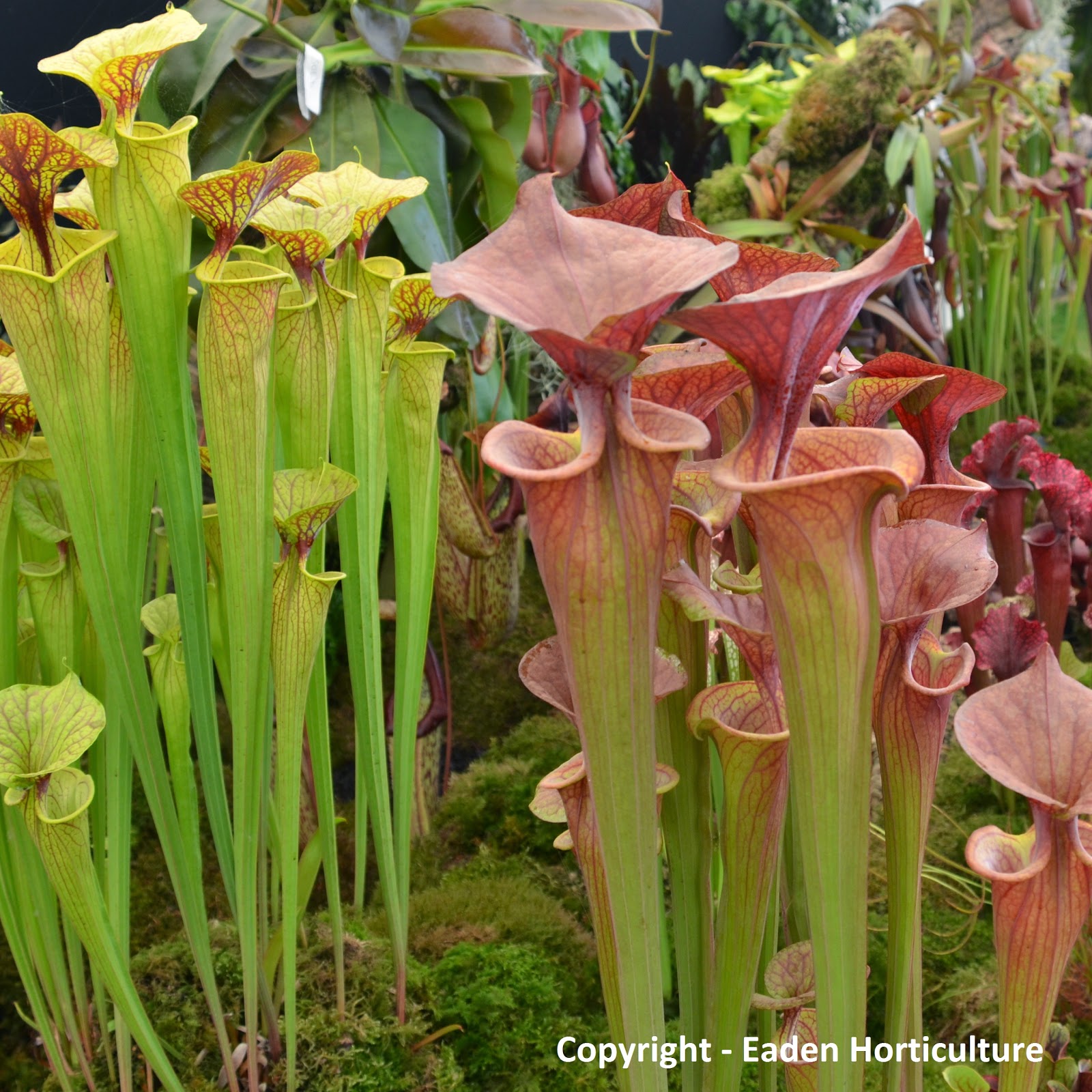 |
| How to grow pitcher plants |
The Pitcher plant - Sarracenia species is a carnivorous plant that captures its prey within a specialised leaf structure and drowns them in a pool of water at the base. Native to most of north America, Sarracenia are broadly distributed and even include a cold hardy species Sarracenia purpurea. So hardy is it that it has even successfully naturalised in Ireland.
 |
| How to grow pitcher plants |
As you would expect with specialist plants they will require specialist conditions, but when it comes to pitcher plants these are relative easy to replicate.
Pitcher plants require waterlogged conditions in an acidic, nutrient poor soil. They will also need to be planted in a sunny position. With regards to being waterlogged the water should be relatively clean and fresh but so long as the water isn't stagnant there shouldn't be any problems.
You can grow pitcher plants in pots either indoors or outside, but if you have the space you can create a specific bog garden to display them. If you are artistically inclined then old bathtubs can be used to make an especially attractive bog gardens, as can old half-barrels lined with plastic. However perhaps the easiest way is to use a preformed plastic pond. Just remember to never allow your pitcher plants to dry out and always place them in a position of full sun.
 |
| Pitcher plant illustration |
Pot on in a one-to-one mix of peat and sterilized horticultural lime free sand or grit. Do not use river sand or beach sand as the salts within them will quickly kill the roots. Placing a layer of sphagnum moss on top of the soil mix to reduce evaporation and help to retain moisture.
Pitcher Plants like boggy, humid environments, so make sure their soil remains constantly moist. Use only distilled water, rainwater or water collected from condensation, like from an air conditioner. Now this is the important part! You cannot use tap water to water your plants as the soluble minerals within it will also damage the root systems of your pitcher plants. This problem is compounded if you water source is collected from a chalk basin, such as you find in south-east England.
Even if your local water is relatively soft, it is still not a good idea to use tap water as your main water source (unless you pass it through a reverse osmosis filter) as it will reduce the acidity of your water as well as adding unwanted chemicals and minerals. It goes without saying that you do not add plant fertilizers to the water.
 |
| How to grow pitcher plants - Sarracenia species |
If your plants have been grow indoors and you do not have access to garden space then you can force dormancy by overwintering your pitcher plants in the refrigerator! There is of course a knack to this.
At the end of autumn, gently remove the soil from its roots and wash with clean rainwater. Trim off any dead leaves and place in a clear, resealable polythene bag with some moist sphagnum moss and a small dressing of fungicide to prevent rots. Leave the plant in the refrigerator for at least three months, and replant in spring.
For related articles click onto the following links:
HOW DOES A PITCHER PLANT ATTRACT, CATCH AND TRAP INSECTS
HOW TO GET RID OF FLIES?
HOW TO GROW PITCHER PLANTS
How to Grow the Pitcher Plant from Seed
HOW TO GROW THE VENUS FLYTRAP FROM SEED
WHY DO CARNIVOROUS PLANTS EAT ANIMALS AND INSECTS







No comments:
Post a Comment